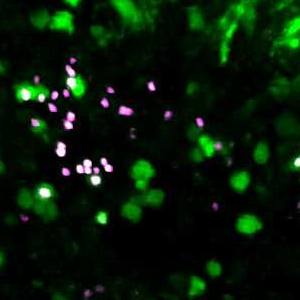-
Preparing to deliver next-generation therapeutics
Mayo Clinic is among the academic medical centers on the cusp of biomanufacturing next-generation cell and gene therapies that offer hope of new cures for rare and complex diseases. Biomanufacturing this new era of biologic medicines is much different than manufacturing pharmaceuticals from complex molecules. It requires highly specialized lab infrastructure, new processes and new scientific know-how.
A couple of Mayo Clinic-led papers encompass some of the first studies to probe how hospital facilities are handling the growing demand for cell and gene therapies that are being tested in clinical trials.
These studies seek to answer these questions:
- How are facilities adapting to this new area of medicine?
- Do they have the support to safely deliver these new therapies?
The findings, which were published in a miniseries in Cytotherapy, are aimed at improving lab facilities and processes to bring cell and gene therapies to more patients.
"In the next stage of personalized medicine, patients can have their own cells collected and manipulated in the laboratory to generate their treatment. Cells can also be genetically modified to enhance their function and/or provide targeted healing," says Michael Gustafson, Ph.D., a laboratory medicine scientist at Mayo Clinic in Arizona and senior author of the study. "To maintain the safety of this new drug product, academic centers must ensure that the cell processing facilities have sufficient resources to meet the increasing demands for these therapies."
An example of an emerging cell therapy is chimeric antigen receptor-T cell therapy (CAR-T cell therapy), which taps the body's biological system to kill cancer. In CAR-T cell therapy, cells are taken from a patient and engineered to unleash the body's ability to destroy cancerous tumors.
Mayo Clinic's Center for Regenerative Medicine is leading a biomanufacturing strategy across Mayo to advance cell, gene and viral vectors, and create an ecosystem of biologics. The goal is to deliver new cures to the practice in alignment with Mayo Clinic's "Bold. Forward." strategic plan and 2030 vision to Cure, Connect and Transform health care.
The research
Allan Dietz, Ph.D., a Mayo Clinic transfusion medicine scientist, published a report of his team's experience of creating a new work unit specifically focused on the handling of externally manufactured products.
Dr. Gustafson led the second study in conjunction with the International Society for Cell & Gene Therapy that focused on how external cell therapy products have affected the medical centers' cell processing labs. His research team examined cell processing facilities at Mayo Clinic and three other academic medical centers, and sent surveys to 36 cell processing facilities to learn how they accommodate demand for next-generation therapeutics. The study found that most labs have had to modify current practices, dedicate significant resources and hire new staff.
"Safeguards need to be put in place so that the cells are handled according to the manufacturer's instructions and given to the right patient. That means staff must be appropriately trained, documents created to ensure each step of shipping and receiving is performed accurately, and patient records must be stored and be made accessible appropriately," says Dr. Gustafson. "It involves a complex coordination of various moving parts to ensure patient and product safety."
The challenge
Unlike standard pharmaceuticals, most cell therapies are derived from a patient's own blood and become living drugs. Pharmacies are not equipped to handle living cells, so once they are collected from the patient, they are often sent to an external facility for bioengineering.
"After the drug is made, the manufacturer sends the product back to the hospital for delivery to the patient. This is a very different process than the traditional way of drugs dispensed through the pharmacy," says Dr. Gustafson. "The cell processing labs have had to come up with ways to ship and receive these externally manufactured living drugs, and ensure quality and safety aspects while doing so."
Two-thirds of the facilities surveyed said they have some institutional support for the significant change in workstream to incorporate a new model for handling externally manufactured products. More help is needed, respondents said, to accelerate clinical access to next-generation cell and gene therapies.
###









